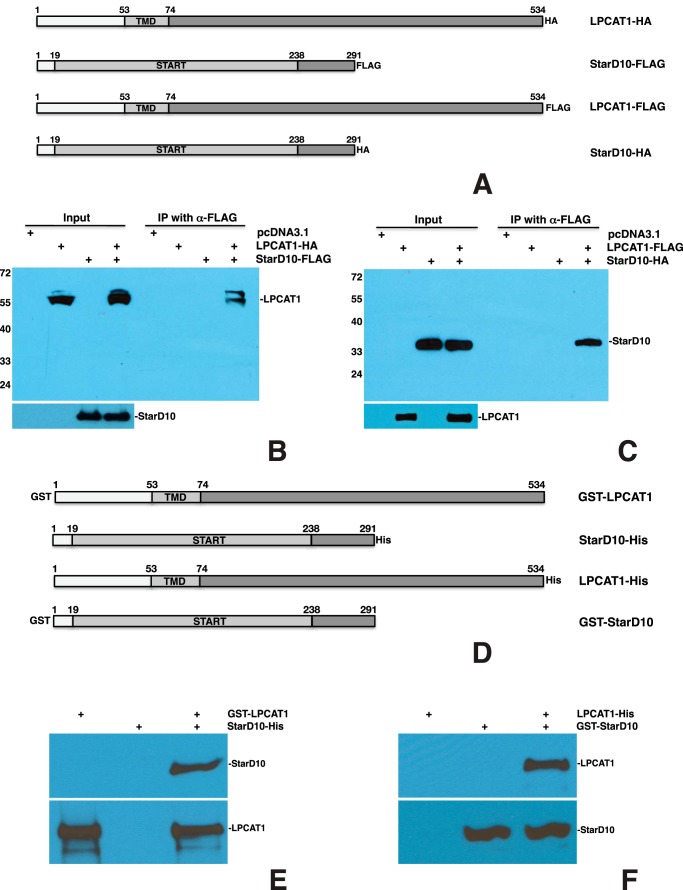FIGURE 2.
LPCAT1 interacts directly with StarD10. A, schematic of HA- or FLAG-tagged constructs for full-length mouse LPCAT1 and StarD10. Co-IP of LPCAT-HA plus StarD10-FLAG (B) and LPCAT1-FLAG plus StarD10-HA (C) is shown. Total lysates of HEK293 cells were singly transfected with empty vector, LPCAT1, or StarD10 or co-transfected with both LPCAT1 and StarD10; immunoprecipitated with resins conjugated with anti-FLAG antibody; and immunoblotted with anti-HA antibody. 5% of cell lysates was used as input; expression of HA-tagged prey and FLAG-tagged bait protein was demonstrated by immunoblotting with anti-HA and anti-FLAG antibodies, respectively. Note that HA-tagged LPCAT1 or StarD10 was pulled down by FLAG-tagged StarD10 or LPCAT1, respectively, demonstrating that co-IP with LPCAT1 and StarD10 worked in both directions. Molecular sizes are indicated in kDa. Results are representative of four independent experiments. D, schematic of GST- or His-tagged mouse LPCAT1 and StarD10 constructs used for the production of recombinant proteins. GST pulldown assays for GST-LPCAT1 plus StarD10-His (E) and LPCAT1-His plus GST-StarD10 (F) are shown. GST or His column-purified recombinant LPCAT1 and/or StarD10 was incubated with GST-resin followed by immunoblotting against LPCAT1 and StarD10. Note that StarD10-His was pulled down by GST-LPCAT1 and that LPCAT-His was pulled down by GST-StarD10, demonstrating that the interaction of LPCAT1 with StarD10 was unaffected by the position of the GST and His tags. Results are representative of four independent experiments.

